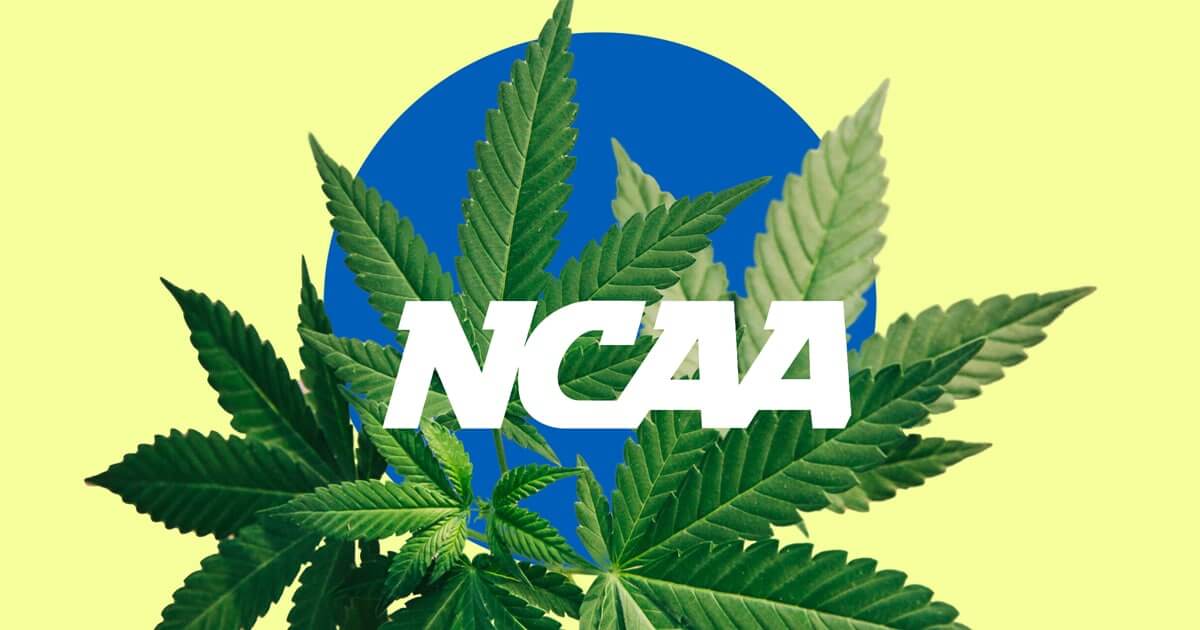Despite the surge of the opioid epidemic, professional institutions, as well as the NCAA, have been reluctant to offer alternative medications for pain and injury management in sports. For younger athletes pushing themselves to excel, this pharmaceutical–rich situation creates considerable and unnecessary risk.
Thousands of college-age athletes are exposed to risky pain management plans, while those pursuing cannabis as pain relief are punished with sit-outs and forfeiture of their spot on teams and in games.
Luckily, this appears to be changing with recent announcements from Brian Hainline—the NCAA’s chief medical officer.
In his press release, he says he is “reconsidering the NCAA approach to cannabis testing, and management is consistent with feedback from membership on how to better support and educate student-athletes in a society with rapidly evolving public health and cultural views regarding cannabis use.”
On the topic of cannabis in sport, he adds, “marijuana is not considered a performance-enhancing substance, but it remains important for member schools to engage student-athletes regarding substance use prevention and provide management and support when appropriate.”
This new approach offers not just comforting words for Division 1 Athletes and those impacted by opioids and seeking alternative treatment—it provides a glimpse into a post-stigma world that has implications for cannabis across new sectors.
Current NCAA Stance
The recommendations given by Hainline and his committee are not binding but will be taken into account as policies evolve. As with the NFL changing its stance on cannabis testing, other sports organizations have shifted their approach to testing and penalizing cannabis use among players.
The MLB opted to remove cannabis from its list of prohibited drugs in 2019. Baseball players are not subject to disciplinary action if they ingest marijuana. Still, officials underlined last year that they cannot work while under the influence and cannot get into sponsorship agreements with cannabis enterprises, at least for the time being.
The same goes for the NFL’s approach, which has moved from prohibitive bylaws to actively researching and funding cannabis-backed studies into long-term pain management off the field.
Together, these three recent cases (NFL, MLB, and NCAA) demonstrate the efficacy of public pressure in changing governing policies. With Hainline’s indicating “a society with rapidly evolving public health and cultural views regarding cannabis use,” the motivation seems clear—these rules serve real people rather than the stigmatic reactionaries.
Related reading: The 2022 Superbowl Highlights the NFL’s Changing Stance on Cannabis
How The Rules Are Changing
The proposed rules are changing cannabis testing and penalization in two significant ways—the potency which constitutes a positive result and the extent to which players are punished should a positive test be located.
THC concentrations must first be established in a test to penalize a player. While old tests will see a positive triggered at 35 nanograms per milliliter, the new rules suggest 150 nanograms a milliliter—over 4x the present threshold.
Next, the penalization structure will change to promote education first—a necessary move as it not only de-stigmatizes cannabis but promotes dialogue, mature use, and openness regarding substance use. Compared to a prohibitive structure, this emphasis on the discussion will hopefully see fewer fall into cycles of addiction out of shame or fear of reprimand.
The proposed new penalty structure for cannabis is as follows:
- First positive test: No loss of eligibility if the school provides a management plan and education for the student-athlete.
- Second positive test: No loss of eligibility if the school provides additional management and education and confirms the student-athlete was compliant with the original management and education plan. However, the student-athlete must be withheld from 25% of regular-season contests if they were not compliant with the original management and education plan.
- Third positive test: No loss of eligibility if the school provides additional management and education and confirms the student-athlete was compliant with the previous two treatment and education plans. However, the student-athlete must be withheld from 50% of regular-season contests if they were not compliant with the previous management and education plan.
By contrast, under the existing regulations for Division I, II, and III student-athletes providing a positive marijuana test automatically disqualify a player for half of the regular season. A second positive test would result in the athlete being subjected to the normal prohibited substances ineligibility regulations, which would result in a season-long suspension.
The equitability of new regulation recommendations signals a shift in how cannabis interfaces with our institutions.
Better inclusion at the sports level mirrors the shift of legislation to allow more stores, more licenses, and more opportunities for wellness in people looking for mental and physical wellness in plant-based remedies.
- Facebook and Instagram Loosen Cannabis Restrictions, But Is It Enough From Meta?
- Combating Violent and Dangerous Crime Act Targets “Candy-Flavored” Cannabis Products
- Retail Spotlight – Mayflower in Lowell, MA
- Benzinga Chicago 2025 Recap
- Iowa’s Surprising Veto of Psilocybin Bill HF 383
- North Carolina House Bill 328 and the Growing Trend of Hemp Regulation in the U.S.













